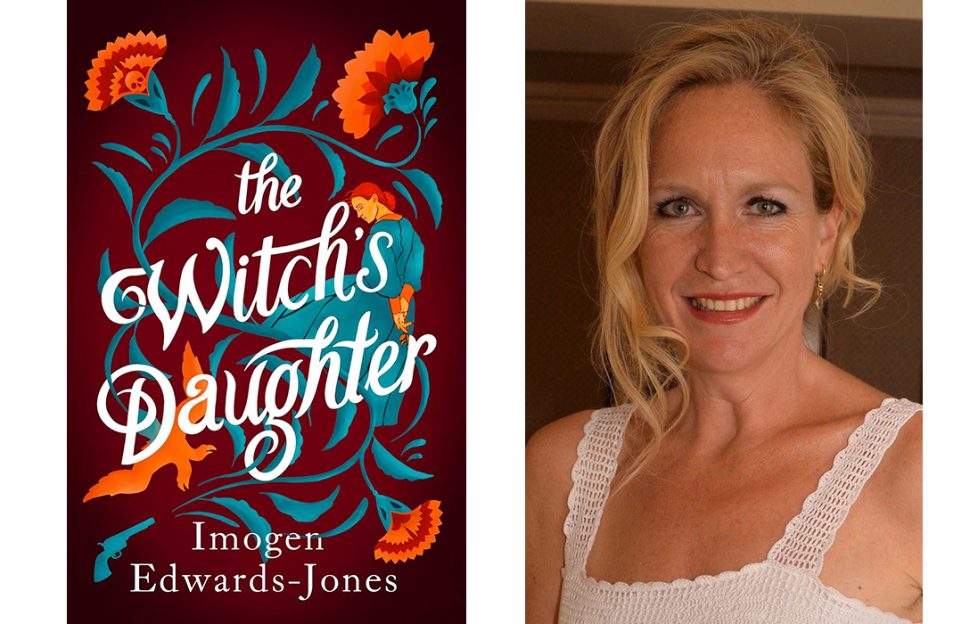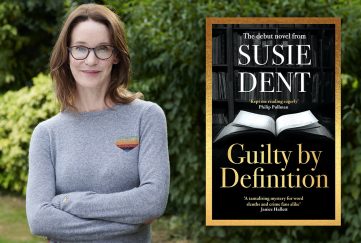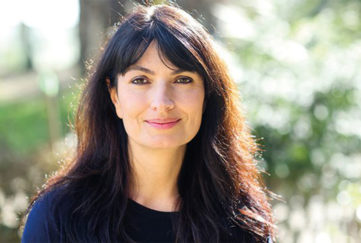The Witch’s Daughter | Imogen Edwards-Jones

Look out for this epic new novel, The Witch’s Daughter, by Imogen Edwards-Jones, out Dec 7, 2024. We catch up with the author to find out more about the story of Princesses Militza and Anastasia…
Can you tell us about The Witch’s Daughter?
It’s based on the true story of the “Black Princesses” who were sisters. They were princesses from Montenegro who married into the Russian court under the last Tsar and were responsible for introducing Rasputin into the court, to the Tsar, the Tsarina and to the very unwell haemophiliac son, Alexei. They were extremely powerful, beautiful young women who practised black magic, mediumship/necromancy (talking to dead people!) as well as tarot and mixing herbs and spells. The occult was hugely fashionable at the time, and they were queens of the so-called Black Salons of St Petersburg. They were highly ambitious and serious players at court and by bringing in the “devil” himself, they were indirectly responsible for the end of an Empire.
The Witch’s Daughter is the story of what happens to them and their children as they escape the Bolshevik revolution and flee south to the Crimea, and how eventually they escape when so many of their friends and relatives, including the Tsar and his whole family, are brutally murdered.
How did you get in to writing as a career?
I read Russian at university, and afterwards I won The Independent newspaper scholarship, which was a national writing competition. They paid for me to do a post-graduate at City University in journalism. I then worked on newspapers for years and wrote columns, and eventually I received a letter from an agent asking me to write novels. I was also sent to cover the collapse of the Soviet Union by The Mail on Sunday for just over three months. I travelled all the way across from St Petersburg to Sakhalin (an island just above Japan) and I wrote a book about the first 100 days of the collapse of communism which was published when I was 23 years old. So I did already have skin in the game!
What books and authors are your inspirations?
So many. I love Russian literature, mainly because I have spent a lot of time there and it is very good way of understanding the Russian soul! But equally I like to be entertained, so the wonderfully Jilly Cooper is always in the mix. I am big fan of anything by Daisy Goodwin and Santa Montefiore, and I love Phillipa Gregory. But I often have about three books on the go at once. I am a member of two books clubs, so there is always a massive pile by my bed. I keep meaning to read Gone with the Wind. It won Pulitzer Prize, and the opening is genius. But it is so thick and heavy to hold, I have only managed the first fifty pages!
Where did the original spark for The Witch’s Daughter (and The Witches of St Petersburg) come from?
The original idea for the Witches came from my great friend Nikolai Antonov, a journalist who I met in the 1990s in Moscow, who told me the story of the sisters who brought Rasputin into the Russian court. It was gripping and, of course as they were women, I had never heard of them, despite knowing my Russian history. He used to telephone me from Russia and tell me titbits that he’d found out. They were hard women to track down. Very sadly, he died long before either of the novels were published. The first one – The Witches of St Petersburg – is dedicated to him.
Since The Witch’s Daughter is based on a true story, what did the research process look like for the book?
It’s taken years! I went to St Petersburg numerous times, sat in a library there run by Princess Katya Galitzine, visited the palaces, including the spooky one that belonged to the Black Princesses called Znamenka on the Gulf of Finland. I now also have a hugely extensive, quite specialised library at home. So, if you want to know about tiaras and what to mix with henbane, I’m your girl!
You’ve written a lot about different parts of the world and different eras of history. What is it that draws you to this sort of thing?
Details. I loved to collect little-known facts about things. The more obscure and useless, the better. My Babylon series – Hotel Babylon, Fashion Babylon, Restaurant Babylon, Air Babylon – were all about juicy nuggets of delight and good stories, the sort of things you like to hear around the dinner table.
What is it about writing magic and mysticism that you enjoy?
I studied at the College of Psychic Studies in the hopes of ensuring all the details are correct in the book. I love disappearing down rabbit holes, and there’s nothing more fabulous than a magical, mystical rabbit hole. It’s all about expanding your mind and testing your boundaries and realising that no one knows the answer to everything.
What is your favourite experience you’ve ever had while writing or researching?
I think travelling to see the Znamenka Palace on the Gulf of Finland where Militza and Anastasia lived. It was cold and grey and winter, and Katya and I were both nervous walking down the long, tree-lined drive to the locked-up, boarded-up Palace. We poked our way around the huge grounds and looked at the stables. It felt very weird and spooky, as if we were being watched. I remember just as the light faded, we both suddenly got very spooked and ran like the wind back down the drive to our car. Neither of us looked back!
What would you like readers to take away from The Witch’s Daughter?
I want them to feel that they have been swept up in an epic, rolling, expansive novel – and that they have enjoyed every second of the journey.




